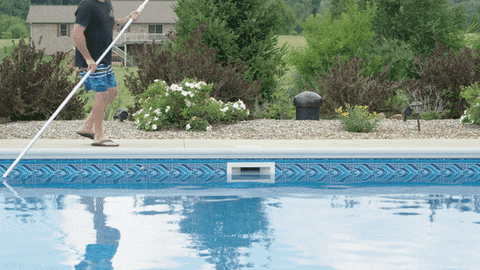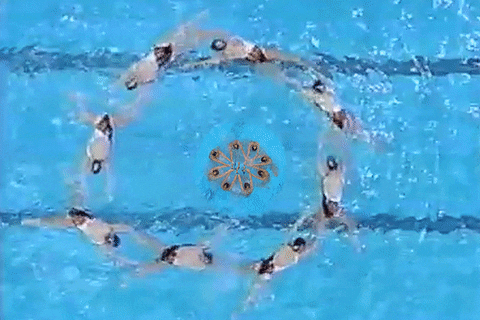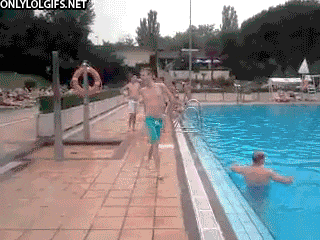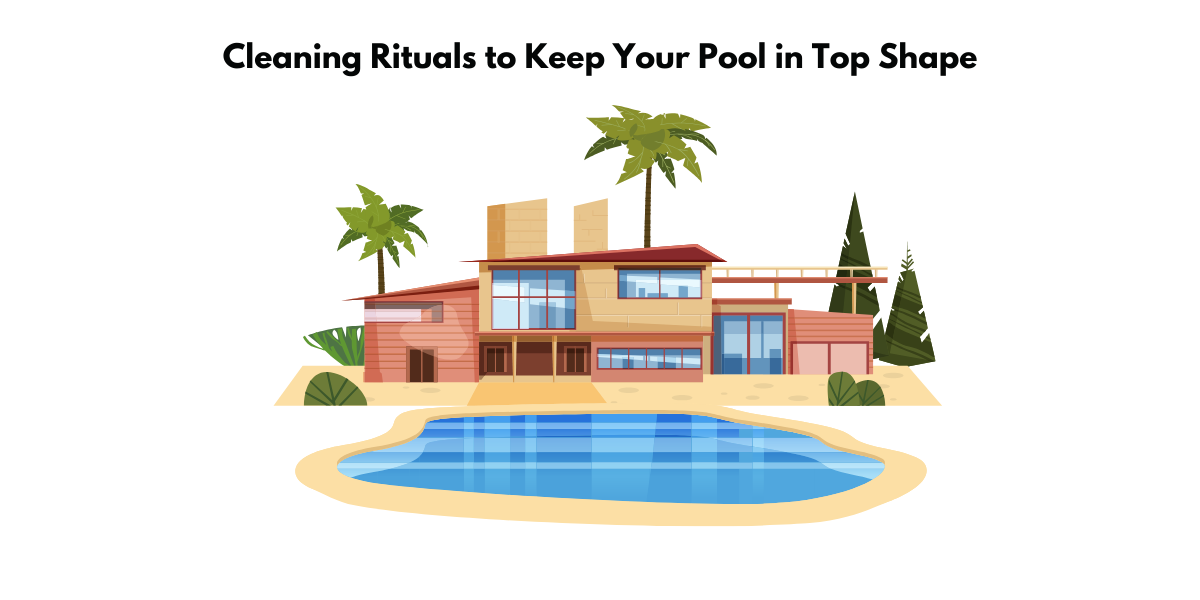Pro Pool Care: Top Pool Cleaning & Maintenance Tips
Dive Into Pro Pool Care
Understanding the Importance of Regular Maintenance
Regular maintenance is the cornerstone of a pristine, crystal-clear pool. By keeping up with scheduled cleanings, you protect your pool from the common threats of algae, bacteria, and murky waters that can turn your backyard oasis into a breeding ground for germs.
Consistent care not only keeps the water inviting but also prolongs the life of your pool, ensuring years of enjoyment and safety for everyone. Remember, a clean pool is the centerpiece of your backyard entertainment and personal relaxation space.
Types of Pools and Their Specific Needs
When it comes to pool maintenance, not all pools are created equal. The three main types of pool surfaces— concrete, vinyl liner, and fiberglass—each come with specific needs and care instructions.
Concrete pools often require periodic acid washing and frequent brushing to prevent algae buildup. Vinyl liners, while less susceptible to algae, can be easily punctured and demand gentle cleaning with soft brushes and vacuums to avoid tears. Fiberglass pools boast a smooth surface that resists algae and stains but can react poorly to the wrong chemicals, highlighting the need for careful product selection.
Each type benefits from customized care to maintain its unique appearance and longevity.

Weekly Cleaning Rituals to Keep Your Pool in Top Shape
Skimming the Surface: A Daily Necessity
Skimming your pool’s surface daily is not just a chore, it’s a necessity that keeps your water inviting and healthy. By swiftly removing leaves, bugs, and other floating debris, you prevent them from sinking and possibly staining your pool floor or clogging your filter system. A net or leaf rake makes this task quick and efficient, ensuring your pool remains appealing and reducing the need for more labor-intensive cleaning later on. Think of skimming as your daily defense against the natural elements that seek to cloud your pool’s beauty.
Vacuuming: The Secret to a Debris-Free Floor
Vacuuming your pool regularly is key to maintaining a debris-free environment. Unlike skimming, which tackles the surface, vacuuming addresses the sediment that settles at the bottom. Doing this once a week minimizes the risk of algae growth and ensures that your pool’s filtration system isn’t strained by excessive dirt. Not only does it keep the pool visually pleasing, but it also feels better underfoot. Remember, a pool that’s vacuumed well is a joy for anyone who dips in.
Circulation is Key for Pool Health
Why Proper Water Flow Matters
Proper water flow is imperative for maintaining a healthy swimming pool environment. It’s the circulation that ensures chemicals are evenly distributed, preventing the formation of algae and bacteria hotspots. More importantly, it allows your pool’s filtration system to capture the maximum amount of debris, which helps keep the water crystal clear. Without good water flow, areas of stagnant water can become a problem, leading to more time spent on maintenance and higher costs due to increased chemical usage. A pool with efficient circulation is a happy pool, with less chance for complications and more time for enjoyment.
How to Optimize Your Pool’s Circulation System
Optimizing your pool’s circulation system is all about ensuring each component functions at its best. Start by checking that your pool jets are aimed to create a circular water flow; this aids in guiding debris toward the skimmer and out of the pool. Positioning jets downwards can also help circulate water at the bottom, preventing dead spots where algae might grow. It’s essential to keep your pump and filter clean and in good working order as they are the heart and kidneys of your pool, respectively.
Regularly backwashing your filter and clearing out pump baskets will go a long way in keeping your water circulating effectively. And don’t forget to run your pump for the recommended 8-12 hours a day to maintain a proper circulation cycle.

Chemical Balance: The Linchpin of Pool Clarity
Testing Your Water & Balancing Chemistry
Testing your pool water and balancing the chemistry are pivotal tasks for pool upkeep. You want to maintain the delicate harmony of pH, alkalinity, and sanitizer levels to ensure the water is gentle on the skin and the pool equipment. Using a reliable testing kit weekly helps you understand the current state of your pool water and guides the adjustments needed.
Balancing the chemicals, such as adding chlorine to keep the water sanitized or muriatic acid to adjust the pH, is much like following a recipe—you need the right ingredients in the right amounts to get a perfect result. A balanced pool means clear water, less irritation on the skin and eyes, and a significantly reduced chance of costly repairs caused by corrosion or scaling.
Tips for Effective Chlorine and pH Management
Effective chlorine and pH management is essential for keeping your pool water safe and sparkling. A well-chlorinated pool eliminates harmful bacteria and contaminants, while balanced pH levels prevent the water from becoming too acidic or too basic—each of which can be detrimental to both swimmers and the pool structure. Regularly adding sanitizing chlorine tablets will ensure a consistent sanitizer level, but be sure to follow the instructions on the label closely and use the right amount for your pool’s volume.
To maintain the ideal pH range of 7.2 to 7.8, test the water with a reliable pH tester at least three times a week. If the pH is off, use a pH reducer or increaser as needed. When managing both chlorine and pH, be mindful of how they interact with each other—high chlorine levels can affect pH readings. By staying vigilant with testing and adjustments, you’ll ensure your pool remains a refreshing and hygienic environment.
Deep Cleaning Strategies
Acid Washing vs. Power Washing: When and How
Acid washing and power washing are two effective but distinctly different deep cleaning methods for your pool. Acid washing is necessary when you’re dealing with stubborn mineral stains, algae growth, or discoloration that regular cleaning can’t handle. This process involves draining the pool and applying a muriatic acid solution to remove a thin layer of the surface, revealing the fresh finish underneath.
Power washing, on the other hand, requires less intensive preparation and is suited for removing grime, dirt, and mildew from the pool deck or the pool’s surface if the finish is in good shape. It’s a gentler process compared to acid washing, and it won’t remove layers of the pool’s finish.
If you’re considering either method, remember that acid washing requires protective gear and careful handling of chemicals, while power washing needs a steady hand and an eye for detail. Both yield excellent results, but it’s often recommended to leave acid washing to the professionals due to the hazards involved.
Tackling Stubborn Algae with Brushing and Algaecide
Tackling stubborn algae requires a two-pronged approach: physical brushing and chemical treatment with algaecide. Start by giving your pool a thorough scrub with a pool brush, paying particular attention to “dead areas” where water circulation is low, such as steps, ladders, and corners. This physical effort helps break up the algae’s hold on the pool’s surfaces, making it easier for the algaecide to do its job.
After brushing, add the right type of algaecide for your pool, following the manufacturer’s instructions carefully. Many algaecides are most effective when used in conjunction with shock treatments, so be prepared to shock your pool if necessary. This combined method disrupts algae’s growth, clears the water, and prevents future blooms. Post-treatment, keep your pump running 24/7 until the pool clears and clean the filter to eliminate any remaining algae spores.

Pool Equipment Care
Maintaining Your Pool Filters and Pumps
Maintaining your pool’s filters and pumps is vital for clean and efficient pool operation. Your filter takes care of tiny debris and contaminants, so regularly cleaning or replacing it is a must. There are different types of filters—sand, cartridge, and diatomaceous earth (DE)—and each has its maintenance schedule and method. For pumps, ensuring that the baskets are free from debris will allow for uninterrupted water flow and reduce the wear and tear on your pump’s motor, thereby extending its lifespan.
For cartridge filters, rinse off loose debris with a hose and soak in a cleaning solution yearly. Sand filters require backwashing when the pressure gauge reads 8-10 psi over the normal operating level. DE filters, while highly efficient, need backwashing and fresh DE added regularly. As for pumps, check the baskets weekly and clean them as needed to prevent clogs. Remember to shut off the power supply before opening the pump!
Choosing the Right Pool Skimmer and Vacuum Equipment
Choosing the right skimmer and vacuum equipment is crucial for keeping your pool in sparkling condition. The skimmer removes leaves and other floating debris from the surface of the water before they sink and decay, while the vacuum removes the dirt that accumulates on the bottom.
When selecting a skimmer, consider the size of your pool and the amount of debris it typically collects. A larger or more tree-surrounded pool may benefit from an automatic skimmer or a wider net. For vacuums, options range from manual models to advanced robotic cleaners that require minimal effort on your part. Look for a vacuum that is compatible with your pool’s design and shape to ensure thorough coverage.
Here’s a quick breakdown of what to consider:
- For skimmers:
- Size of the pool
- Amount and type of debris
- Manual vs. automatic skimmers
- For vacuums:
- Pool surface material
- Shape and size of the pool
- Manual, suction, pressure, or robotic cleaners
Seasonal Pool Care Guide
Preparing for Summer: Opening Your Pool Correctly
Preparing for summer and opening your pool correctly are essential steps to ensure a season full of safe and enjoyable swimming. Begin by removing the pool cover, cleaning it, and storing it properly. Next, reassemble all removed parts like plugs, filters, and pumps, and ensure they’re in good working condition.
Fill the pool to the appropriate water level and start your filtration system, checking for any leaks or issues. Before diving in, test and balance your water’s pH, chlorine, and other chemical levels, which may have fluctuated during the off-season. Shocking the pool may be necessary to address any lingering bacteria or algae. And lastly, don’t forget to inspect your safety equipment to guarantee a summer of fun and worry-free relaxation by the water.
Winterizing: Steps to Protect Your Pool in the Cold
Winterizing your pool is a series of proactive steps to protect it during the cold months. Begin by thoroughly cleaning your pool and balancing the water chemistry to protect the pool’s surface and equipment from damage. Next, lower the water level slightly below the skimmer to accommodate for expanding ice, and drain water from your plumbing lines to prevent freezing and cracking.
Equip your pool with an air pillow to guard against ice expansion damage and install a pool cover that can withstand the weight of snow and debris. Apply a winterizing chemical kit to keep the water clear of algae and contaminants throughout the off-season. Lastly, periodically check on your pool cover throughout the winter to ensure it remains secure and clear any accumulated water or snow to prevent stretching or tearing.

Consulting with Pool Professionals
When DIY Becomes Overwhelming: Finding the Right Service
When DIY pool maintenance becomes overwhelming, it’s wise to consider finding the right service to take over. You’ll want to look for certified, experienced pool professionals who can provide comprehensive maintenance packages tailored to your pool’s needs. A good pool service will handle everything from routine cleanings to balancing chemicals and checking equipment, allowing you to enjoy the luxury of a clean pool without the headache of upkeep.
Start with online research or recommendations from fellow pool owners, reading reviews to gauge the reliability of the service. Contact the best candidates to discuss your needs and their rates. Opt for a company that offers clear communication and a detailed contract outlining the services they’ll provide. By investing in a professional pool service, you’re investing in peace of mind and more free time to spend on the activities you love.
Pool Inspections and Repairs: Preventive Measures
Pool inspections and repairs are preventive measures that keep small problems from becoming major expenses. Regular professional inspections can identify issues like leaks, malfunctioning equipment, or structural damage before they worsen. Early detection and repair can save you considerable time and money in the long run.
During an inspection, expect a thorough assessment of the pool’s surface, skimmers, pumps, filters, heaters, and any other relevant equipment. If repairs are needed, promptly addressing them will preserve the integrity and safety of your pool. It is wise to schedule an inspection at least once a year or immediately if you notice changes in water levels, sounds, or performance. Remember, an ounce of prevention is worth a pound of cure, especially when it comes to pool care.

Pool Cleaning FAQs
How Often Should I Clean My Pool?
You should aim to clean your pool at least once a week to uphold water clarity and hygiene. This routine cleaning includes skimming, vacuuming, and checking the chemical balance. For high-use periods or pools under trees, more frequent cleaning may be necessary. Additionally, professional maintenance every other week or monthly can ensure more extensive tasks are handled correctly.
What’s the Best Way to Remove Leaves and Larger Debris?
The best way to remove leaves and larger debris from your pool is by using a leaf rake or skimmer net. These tools are specifically designed to trap bigger items efficiently while preserving your pool’s filter system. For the best results, skim your pool daily and consider a pool cover to minimize debris accumulation.
Is it Worth Investing in an Automatic Pool Cleaner?
Absolutely, investing in an automatic pool cleaner can be a game-changer. They save you time and effort by automating the cleaning process, allowing you to enjoy your pool with minimal maintenance. These cleaners range from suction and pressure models to advanced robotic units that handle cleaning with precision. Consider the size of your pool, the type of debris you deal with, and your budget when choosing the best automatic cleaner for your needs.
Can Pool Cleaning Affect its Longevity?
Yes, routine pool cleaning significantly affects its longevity. Regular removal of debris, along with maintaining proper chemical balance and equipment care, prevents the buildup of harmful substances that can degrade your pool’s structure and systems. Thorough cleaning mitigates wear and tear, ensuring that your pool remains in top condition for years to come.


